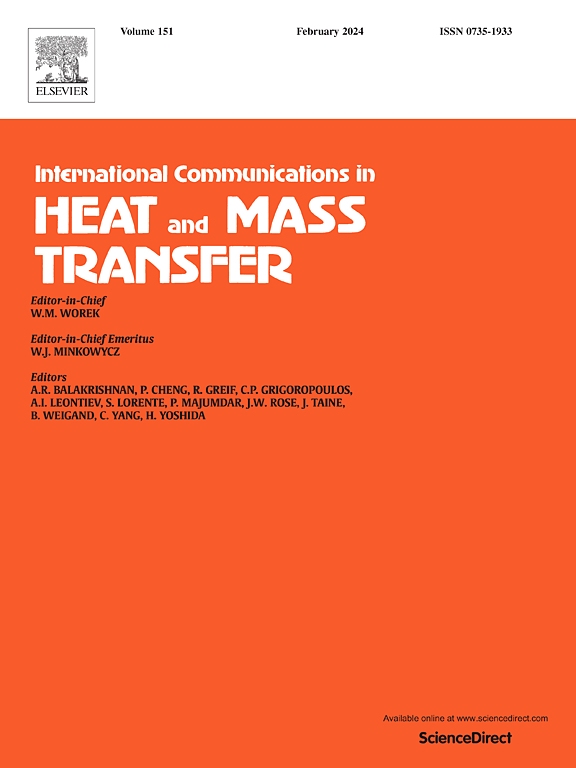An entropy-based random-walk model for predicting in-plane thermal conductivity of porous media
IF 6.4
2区 工程技术
Q1 MECHANICS
International Communications in Heat and Mass Transfer
Pub Date : 2025-03-23
DOI:10.1016/j.icheatmasstransfer.2025.108862
引用次数: 0
Abstract
In this study, we propose a random-walk model to estimate the in-plane thermal conductivity of porous media within a two-component, two-dimensional domain. An entropy-weighted procedure guides random walkers to explore a heterogeneous domain composed of distinct thermal properties by using independently injected thermal particles. This entropy-based random-walk (ERW) model was validated against several synthetic domains using numerical simulations and theoretical models. Our results demonstrate that the proposed model aligns with the Shannon–H theorem, exhibiting maximal entropy properties. The ERW model showed acceptable precision compared with the theoretical and numerical models. In some geometries, the model closely matched the numerical simulations, whereas in others, it aligned with the theoretical predictions. Connection between the ERW model and weighted harmonic mean model is discussed. Furthermore, the accuracy of the ERW model was tested using real applications with scanning electron microscopy (SEM) images and experimental measurements. A comparison between the ERW model and classical finite-volume method highlights the advantages of the proposed approach in heterogeneous domains with high conductance ratios, where finite-volume model convergence is hindered. To enhance the simulations, a multithreaded parallelized version of the ERW simulations was developed for the CPU platform, which is particularly effective for large numbers of particles.
求助全文
约1分钟内获得全文
求助全文
来源期刊
CiteScore
11.00
自引率
10.00%
发文量
648
审稿时长
32 days
期刊介绍:
International Communications in Heat and Mass Transfer serves as a world forum for the rapid dissemination of new ideas, new measurement techniques, preliminary findings of ongoing investigations, discussions, and criticisms in the field of heat and mass transfer. Two types of manuscript will be considered for publication: communications (short reports of new work or discussions of work which has already been published) and summaries (abstracts of reports, theses or manuscripts which are too long for publication in full). Together with its companion publication, International Journal of Heat and Mass Transfer, with which it shares the same Board of Editors, this journal is read by research workers and engineers throughout the world.

 求助内容:
求助内容: 应助结果提醒方式:
应助结果提醒方式:


